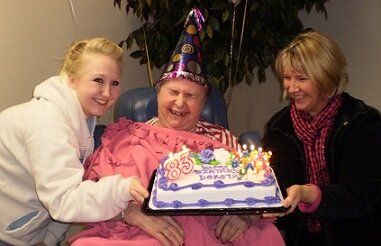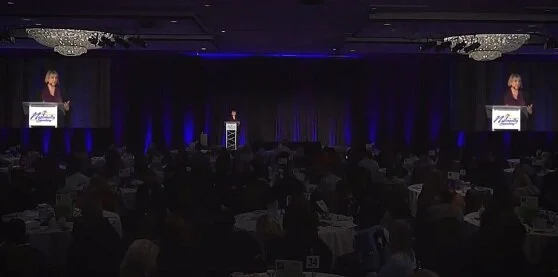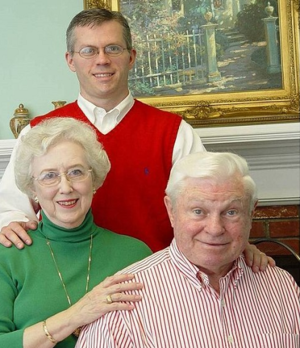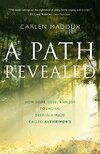My son David, who’s now 47, asked me the question above. What follows is my response. I posed a similar question to myself when I was 70, a couple of years after my wife Martha died. This question this year has the benefit, or not, of seven years of seasoned reflection. If you find any value here, embrace it as you will. If not, you know where File 13 is.
Dear David,
First, some context. I was 47 in 1992 and your Mom was 45. You and Rachel were still in high school and Kathryn was in middle school. My regional business magazine was eight years old and expanding, yet also growing in debt. Martha was a few years out from having served on the St. Petersburg City Council. Yes, that council—the one that approved building a domed stadium (now called Tropicana Field) designed for a Major League Baseball team with no team in sight. She often said, “I can’t run for an elected office again unless we get a team.” An expansion team, now called the Tampa Bay Rays, finally was announced for St. Petersburg in 1995, about a decade after Martha left the council.
All in all, our family was little different from many others, enjoying good times and some bad, but mostly good. Then 1997 hit, a year after Martha had run for an open seat in the Florida State Legislature and lost by 23 votes. The date September 23, 1997, is burned into my memory: “I’m sorry, but it appears you have early onset alzheimer’s disease,” a neurologist told Martha. Our world was not turned upside down by this news, it imploded before us.
Top to bottom: Martha in better times; Rachel’s family today; Kathryn’s family; David’s family
As I reflect on this, David, my thinking shoots off in so many directions, but I’ll try to narrow down to a handful of thoughts, some coherent, others not so much. As I talk to me at 47, I find myself also talking to me at age 77. Much of what I’m sharing has come out of the hard work and stress of those volatile 17 years of caring for Martha and from subsequent years of reflection following her death nine years ago in June 2014.
I’m fully aware that the crisis we endured mirrors millions of other families who have had to endure their own unique stresses and burnouts from one form of dementia or another—even from entirely different kinds of crises—including many who may be reading this. Their stories are as unique to them as ours is to us and their faith traditions may be different from mine, but we can still learn from each other.
As I talk to myself at 47, David, I’ll be sharing a give-and-take conversation between me now and myself 30 years ago. So here goes:
Carlen at 47: What would you share with me that would be worth knowing at this stage in my life?
Me at 77: Carlen, you and Martha have been living by your wits, your intelligence, your emotional impulses, and your willpower, drawing on all these traits as the situation demanded at home, with the kids, at work, in your social circles, and in the political and civic arenas. You encountered few, if any, problems that you weren’t able to resolve one way or another. All this was fine, but it did little to prepare you for the crisis that lay five years out.
You’re quite busy, aren’t you, Carlen? You’re working 60, 70, even 80 hours a week trying to keep the magazine moving ahead, if not afloat. By design, you’re the face of the Maddux Report, but I’m not sure you understand what that means in terms of the demands of time, effort, and financial risks. You have an embedded fear of failure and a need to please others, don’t you? Just how are you dealing with the stress that all this can generate in you? Not to mention the demands at home. Do you not understand the long-term consequences of absorbing such stress with few or no safety valves?
Cover of our magazine’s 20th anniversary issue, March 2004. The magazine closed June 2010.
This is probably the greatest thing I can share with you, Carlen. First, there is no way that I know of to prepare explicitly for the consequences of a crisis like alzheimer’s, or bankruptcy, or a heart attack, or the loss of a child or loved one, or whatever. Yes, you can take certain steps like a good diet, exercise, protecting your savings, etc. But those are rather limited in addressing the emotional and psychological tolls such crises can exact.
Carlen at 47: I’m not sure what you mean.
Me at 77: Do you remember what Mom used to say? “Take time, Carlen, to smell the roses.” You didn’t understand what she meant, did you? Amid all your busy-ness you need to learn to build in what I call ‘emotional and spiritual shock absorbers. Heavy-duty shock absorbers.’
Do it now. Don’t wait until a crisis hits. Very few people are fortunate enough to avoid a serious crisis at some point in their lives.
Carlen at 47: Can you be more specific?
Me at 77: As I look back to my post from seven years ago, I laid out some actions that can help build in such shock absorbers prior to a crisis: 1) Be willing to forgive others AND yourself—quickly; 2) Take time to be quiet and still with Martha and yourself—while you’re both still healthy; 3) Experience God intimately and not as some mere religious belief. I won’t repeat myself here other than to say that forgiveness, or its lack, can be a matter of life and death, of good health or ill. I’ve learned the hard way that bitterness and unforgiveness make up a major portion of emotional, psychological, physical, and mental stress.
Carlen at 47: I guess you’re right. I’ve always viewed ‘forgiveness’ as some religious admonition that I should get around to sooner or later. Rather than something that could have a direct bearing on my health and wellbeing. Anything else?
Me at 77: Give the practice of meditation serious consideration. Now, while you and Martha are young and quite healthy. Martha and I were introduced to this practice not long after her diagnosis 25 years ago, when she was 50 and I was 52. It’s a gift that keeps on giving.
Carlen at 47: I understand this is significant to you, but in what ways?
Me at 77: I learned much of what I know about meditative prayer from the late John Main’s classic little book, Word into Silence. His protégé Laurence Freeman of the World Community for Christian Meditation (WCCM), describes meditation this way: “Life’s weather being so unpredictable is why we should fix the roof while the sun is shining. Even if it leaks again during storms, damage is reduced. Meditation builds resilience.” That’s as good as I could express it.
Carlen at 47: But I’ve never been aware of meditation other than in some New Age-y kind of way. I do remember the Beatles being all into it when they returned from India, touting their newfound ‘guru’ and their ‘mantra’. I also heard this was something monks and nuns do.
Me at 77: I know, I know, some people are put off by the words ‘meditation’ and ‘contemplation’ and ‘mantra’. So let me try to explain with the most extreme example I remember: Those moments during our 17-year odyssey through alzheimer’s that I would see my heart and mind—all of me, really—fractured into a thousand pieces around my feet. “Caring for Martha, running my magazine, caring for our children is just TOO MUCH. What a hopeless mess,” I cried! But as I continued this practice of contemplative prayer—which had been so unknown and strange to me all my life—a sense of wholeness, a fullness, often would come over me. I felt alive again. Alive inside and alive with the world and people around me. Rarely did this happen immediately but over time it did.
Here's one other example of how meditation helped Martha and me: We often sat still, side-by-side in the mornings and in the evenings, holding hands, and I would quietly repeat for about 20 minutes the phrase we’d chosen. After a while—and I don’t remember how long “a while” was—Martha’s anxiety and mine began to lift. Yes, I still worried about our future, but not nearly so much. It felt like each time we meditated we were choosing to transfer our dark and scary, unknown future from our shoulders to what I can only describe as God’s Presence.
Carlen at 47: So you’re continuing this practice even now?
Me at 77: Yes. Some folks have wondered why I still practice meditative prayer now that Martha is gone and our crisis has lifted. To put it simply, meditation works for me. It is no magic potion. I keep discovering within me dark, deserted wastelands—stuff like bouts of fear and loneliness, lack of purpose or meaning, anger, and yes, even spells of guilt and grief. All traits and feelings that need infusions of God’s life, love, and direction. Three steps forward and two back, as they say. I don’t have time to enumerate all the ways I’ve benefited, but I can share a few that this practice of meditation, woven through the practice of forgiving and forgiving quickly, does help:
During our 17-year odyssey, it helped me to step into Martha’s world when she was unable to express herself or articulate her needs. It helped keep me from arguing with her when she asserted nonsensical statements.
It helps me to laugh at myself and to be gentle with myself. To love myself while opening my heart to those around me.
It helps me to see my good traits and bad while learning to be captive to neither.
It helps release me from my obsessions and addictions.
It helps diminish my anxieties and fears.
It helps expose and diminish the perfectionism, the self-centeredness, and self-righteousness that I so naturally grew up with.
Finally, it helps awaken the inner child in me.
Does this practice of meditating 20 minutes in the morning and 20 minutes in the evening resolve all my issues? Of course not. But it does help clear my heart and mind to address such issues in a different, more creative way. Meditation, along with learning to forgive, does help me to focus on God’s love and healing nature rather than on the pain and darkness and dullness that on occasion arise within me, those wastelands that I referred to earlier. They have helped soften the hard shell of my ego by allowing Christ’s healing light to emerge within, to be attentive to God’s Presence so I may be attentive to myself and those around me. Over a period of time I sense a refreshing of my heart and mind.
Even today, 25 years after Martha was diagnosed, I still don’t understand all the lessons thrust on our family during our often difficult 17-year odyssey. But as I reflect on this period, Carlen, and reflect on the practices I’m still learning, this stands out more than anything…
Meditation and forgiveness, along with other contemplative practices, are silent expressions of failure and hope. I better understand now that my failings, real or supposed, form the ground from which God’s healing Life and Love can grow and flourish, grow in ways that I’ve not otherwise experienced.
There is one other thing I would add that was so important to me through our 17-year odyssey: Try to find a mentor(s) as you move along the path before you. Several showed up for us at just the right moments. How? I don’t know other than to say I think it was the unfolding of God’s grace. I’m really glad they did show up.
~~~~~~~~~~~~~~
This has been a rather long-winded response to your question, David. There are quite a few other things I could share, but I won’t for now. While I do see these changes evolving within me, you and your sisters and our friends may beg to disagree. LOL.
I hope this makes some sense. Take from it what you will.
I love you, David. Rachel and Kathryn, too.
++++++++++++++++++++++++++++
And to those who are reading this post, I say the same: Take from this conversation what you wish. THIS IS MOST IMPORTANT: My approach in seeking to avoid burnout and being trapped in an insidious darkness may not be yours. However, I strongly encourage you to discover an approach that does work for you. And to find a mentor(s) and/or a support group who can help you along the way.
By the way, you might try writing to yourself at an earlier age. It doesn’t have to be polished or for anyone but yourself. It’s crazy what can pop up in your mind and heart.
Thanks for listening. Feel free to contact me and feel free to forward this post to anyone you think might find it of interest.
Carlen Maddux
PS1 I continue to buy several sheets at a time of the Alzheimer’s semi-postal, first-class forever stamps ($15 for a sheet of 20). As you know, the net proceeds from its sales go to the National Institutes of Health for Alzheimer’s research. As of December 2022, 10.5-million stamps have been sold, raising over $1.3 million for research. Join me and thousands of others to Help Stamp Out Alzheimer’s. If you can’t find the stamps locally, you can order online by clicking here.
PS2 If you’d like to sign up for my blog, there’s no charge; just click here. (If that doesn’t work for some reason, you can always email me direct at carlen@carlenmaddux.com, Subject Line: Add to Blog. And I will manually add you to the list.)
PS3 My book, A Path Revealed: How Hope, Love, and Joy Found Us Deep in a Maze Called Alzheimer’s, can still be found on Amazon and other online book stores. I share our family’s 17-year odyssey of living with this disease. But alzheimer’s is not the focus of our story; it’s the context. The focus is the spiritual odyssey that unfolded before us, sometimes in strange and surprising ways, other times in the most ordinary of ways.



















































































